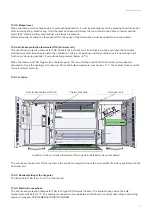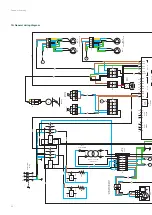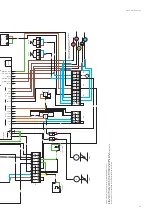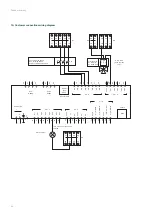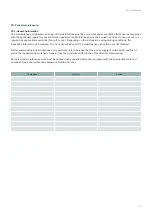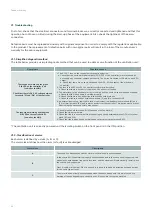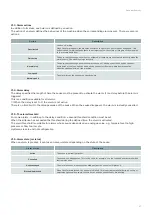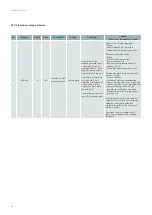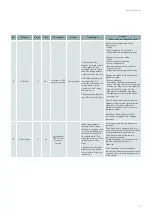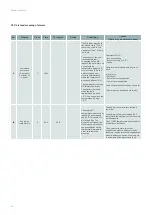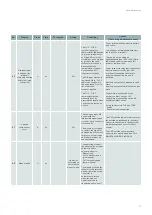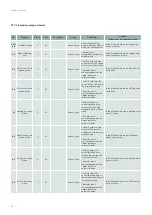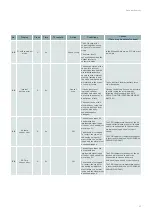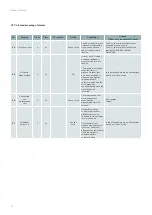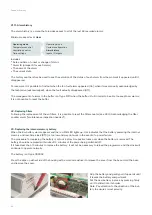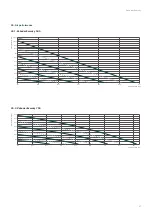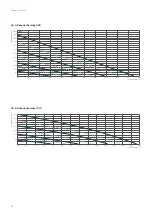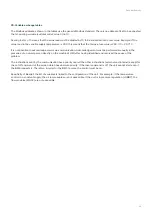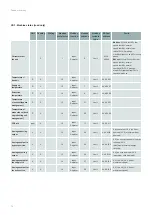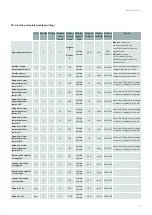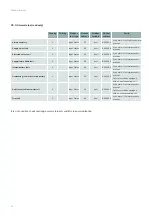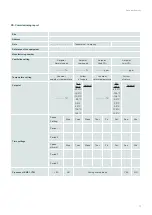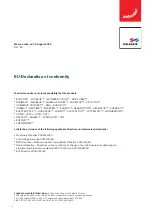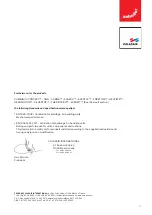
65
Zehnder Eversky
21.8. Acknowledgement procedure for a class A or B alarm
Class A or B alarms need to be manually acknowledged via the HMI to return the fan unit to normal operation.
The procedure for manually acknowledging an alarm (Class A or B) is to register the alarm via the Active Alarms menu
by selecting the "log" option for the alarm in question. This alarm can be in the following states:
■
Active: the fault is currently present, manual acknowledged (logging) will not restart the machine until the fault is
corrected. This is particularly the case for the triggering of the overheating safety thermostat of the electric heating
coil (EB).
■
Cancelled: the fault has disappeared (or been resolved) and has therefore been cancelled (is no longer present).
Logging this will allow the machine to be restarted. It will reappear if the problem persists.
When an active alarm is cancelled, blocked, or logged (=manually acknowledged), this change of status is recorded in
the fault history, which makes it possible to know exactly when faults appear/disappear, thus facilitating the diagnostic
procedure.
21.9. Acknowledging the filter counter alarm ("maintenance inspection needed")
Minimum access level: Service
Temperature ctrl
CO₂ ctrl
Supp. loop control
Alarm setting
Alarm thresholds
Alarm delays
Resetting filter counter
Filter alarm
Reset timer
to zero:
No
Manual / Auto
Settings
Configuration
Access rights
An alarm appears every 12 months (not configurable) to indicate the need for a maintenance visit. Enter YES to reset the
counter and acknowledge the alarm.
Counting is only performed when the power is on, even if the fans are off. Counting is not operational when the unit is
off, 6 months = 6 x 30 days = 180 days.
This alarm can be deactivated via the Alarm configuration/alarm 86 menu and set to "inactive" priority instead of
"Alarm-C".
21.10. Presence of active alarms
The presence of active alarms is indicated by the flashing of the red LED on the HMI of the ventilation unit.
Pressing the red button on the HMI gives direct access to the active alarms menu if at least one active alarm is currently
present. If there are several alarms present at the same time, the last one is displayed by default, and it is possible to
display them one after the other by successively pressing the up or down arrow.
Access to the active alarms menu does not require an access level.

